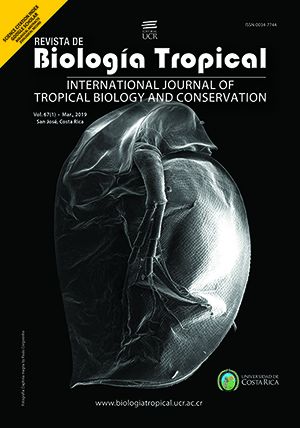Abstract
Lago de Tota basin is currently being impacted by human activities like agriculture, deforestation, large-scale fish farming and monoculture of onion long (Allium fistulosum) with high use of agrochemicals and chicken manure that contaminate runoff to aquatic systems in the largest high mountain lake in Colombia. We implemented toxicity tests to evaluate possible deleterious effects of contaminants on H. attenuata and D. magna, model organisms commonly used in aquatic contamination assessment. Firstly, the organisms were acclimated and toxicity tests were validated in laboratory conditions. Later, water and sediments (elutriates) were evaluated from tributaries of Lago de Tota basin: Hato Laguna, El Tobal, Los Pozos, and Agua Blanca stream, during two contrasting hydroclimatic periods. In addition, pesticides in
sediments were evaluated with chromatography, spectrometry and ultraviolet detection techniques. Acute toxicity tests showed that H. attenuata was more sensitive than D. magna, as it showed sublethal (Kruskal-Wallis; P < 0.05) and lethal responses to exposure to waters and elutriates from Hato Laguna, El Tobal, and Los Pozos. At least five pesticides not quantified before in the basin were detected in chemical analyses (chlorothalonil, aldrin, dieldrin, DDT y congeners). These results indicate that anthropogenic activities have a potentially negative influence in aquatic communities composition, structure, and function, it´s demand attention in future research.
##plugins.facebook.comentarios##

This work is licensed under a Creative Commons Attribution 4.0 International License.
Copyright (c) 2019 July Andrea Barrera Herrera


